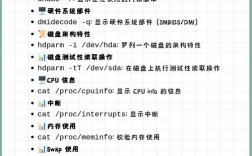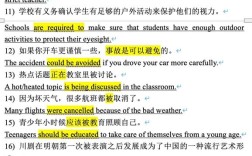灵活运用英语介词是提升语言表达准确性和地道性的关键,介词虽小,却承载着丰富的语义功能,如表示时间、地点、方向、方式、原因等,掌握介词的用法不仅需要记忆固定搭配,更要理解其背后的逻辑和语境差异,以下从核心功能、常见误区、灵活策略及实战应用四个维度展开分析,帮助系统掌握介词的运用技巧。
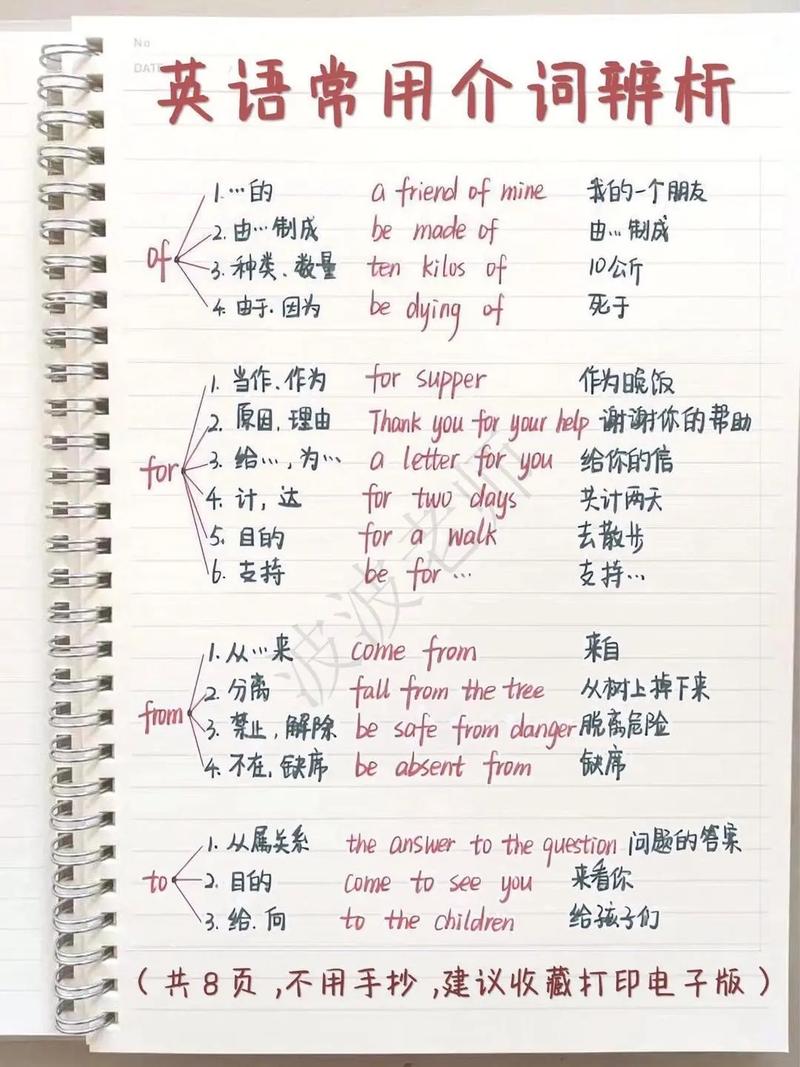
介词的核心功能与分类
介词的本质是表示词与词之间的逻辑关系,根据其功能可分为以下几类:
- 时间介词:区分“在某一时间点”(at 5:00/on Monday)、“一段时间内”(in 2023/for two hours)、“时间点之前/之后”(before/during/after)。“at the weekend”(英式英语)与“on the weekend”(美式英语)的地域差异需注意。
- 地点介词:涵盖静态位置(in the room/on the table)、动态方向(to the airport/towards the window)和空间范围(across the river/through the forest)。“in”表示内部,“on”表面接触,“at”具体点,需结合场景选择。
- 方式介词:描述动作的方式(by bus/with a knife)、工具(in English)或伴随状态(with friends)。“by”后接动名词(doing)表示方法,“with”后接名词表示工具。
- 其他介词:如表示原因(because of/due to)、所属(of)、排除(except for)等,需结合语境判断。
常见误区与辨析
-
in/on/at的混淆:
- in用于较大空间或时间段(in China/in the morning);
- on用于具体表面或特定日子(on the wall/on Sunday);
- at用于小范围点或精确时刻(at the door/at noon)。
例外:在“at night”(固定搭配)中,尽管“night”是时间段,却用“at”而非“in”。
-
for/since/from的区别:
- for+时间段(for three days);
- since+时间点(since 2020);
- from+起点(from Monday to Friday)。
“I have lived here for ten years.”(持续至今)与“I have lived here since ten years ago.”(起点相同)。
-
across/through/over的动态差异:
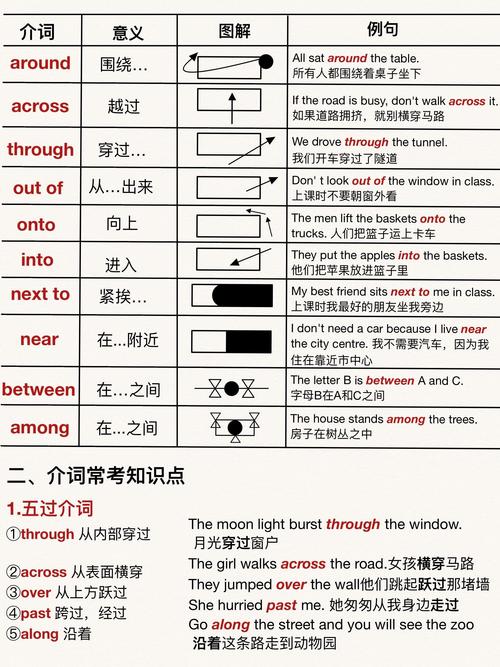 (图片来源网络,侵删)
(图片来源网络,侵删)- across表面横向移动(swim across the river);
- through穿越内部(walk through the forest);
- over上方跨越或覆盖(jump over the fence)。
灵活运用介词的策略
-
语境优先原则:
介词的选择需依赖上下文。“be interested in”(对…感兴趣)与“be interested at”搭配错误,而“look at”(看)与“look for”(寻找)的差异仅在于介词。 -
固定搭配积累:
动词、形容词与介词的固定搭配是高频考点。- 动词+介词:depend on(依赖)、listen to(听);
- 形容词+介词:afraid of(害怕)、different from(不同于)。
可通过表格整理高频搭配:
动词/形容词 介词 例句 agree with I agree with you. apologize for He apologized for being late. proud of She is proud of her son. satisfied with They are satisfied with the result. -
多义词的语境延伸:
同一介词可能有多种含义,需结合语境判断。“by”可表示方式(by car)、时间(by 5 o'clock)、原因(by mistake)或被动(by me)。 -
母语负迁移的规避:
中文介词与英语并非一一对应,中文“向老师提问”对应“ask the teacher a question”或“ask the teacher for help”,无需“to”;而“向某人学习”则是“learn from someone”。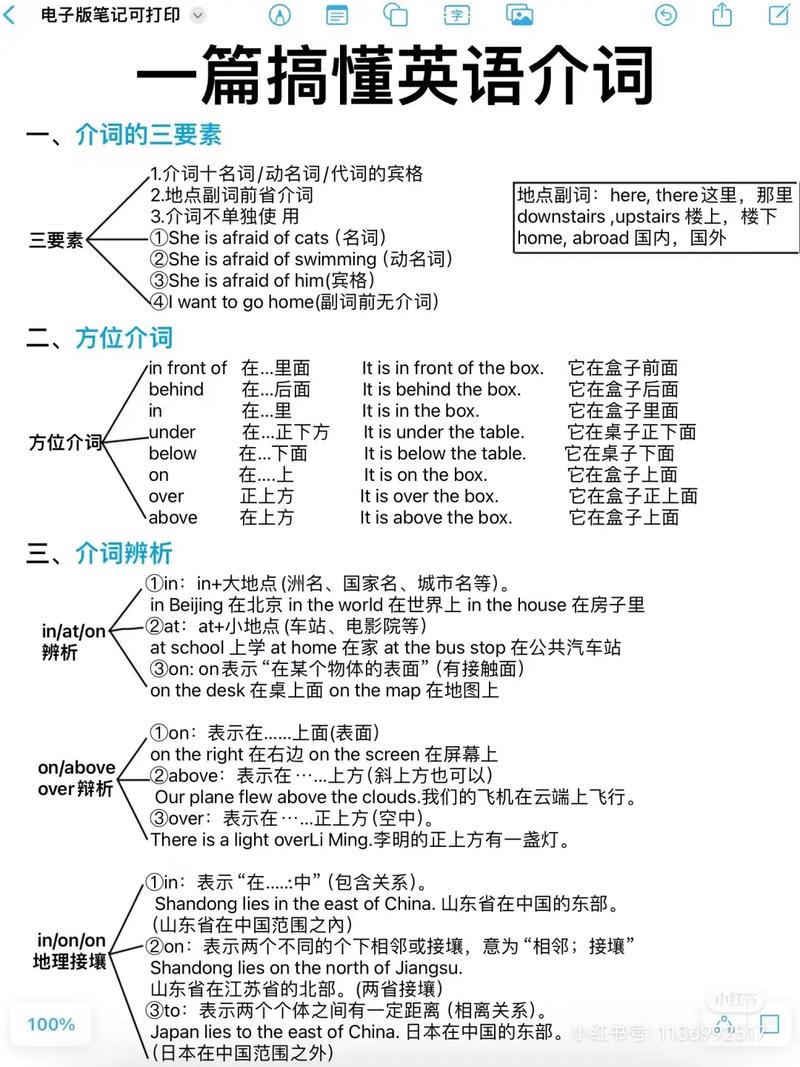 (图片来源网络,侵删)
(图片来源网络,侵删)
实战应用与进阶技巧
-
介词短语作定语/状语:
- 定语:The book on the desk is mine.(介词短语修饰book)
- 状语:He studies English with passion.(介词短语修饰studies)
-
介词的省略与重复:
- 省略:在“spend time (in) doing sth.”中,“in”可省略;
- 重复:并列结构中需重复介词保持平行,如“She is good at math and at physics.”
-
介词的动态化使用:
现代英语中,介词常灵活化用。“up”可构成“up to”(多达)、“up against”(面对)等短语,需结合语境灵活理解。
相关问答FAQs
Q1: 如何区分“beside”和“besides”?
A: “Beside”表示“在…旁边”(物理位置),She sat beside the window.;“Besides”表示“除了…还有”(补充说明),Besides English, he also speaks French. 前者是介词,后者是副词或介词,需通过词性和语境判断。
Q2: 为什么“home”前不用介词,但“go home”却正确?
A: “Home”作为副词时,表示“回家”,无需介词;但若“home”为名词,则需介词,He is at home.(他在家),在“go home”中,“home”被副词化,因此无需介词,这是英语中地点副词的特殊用法。

